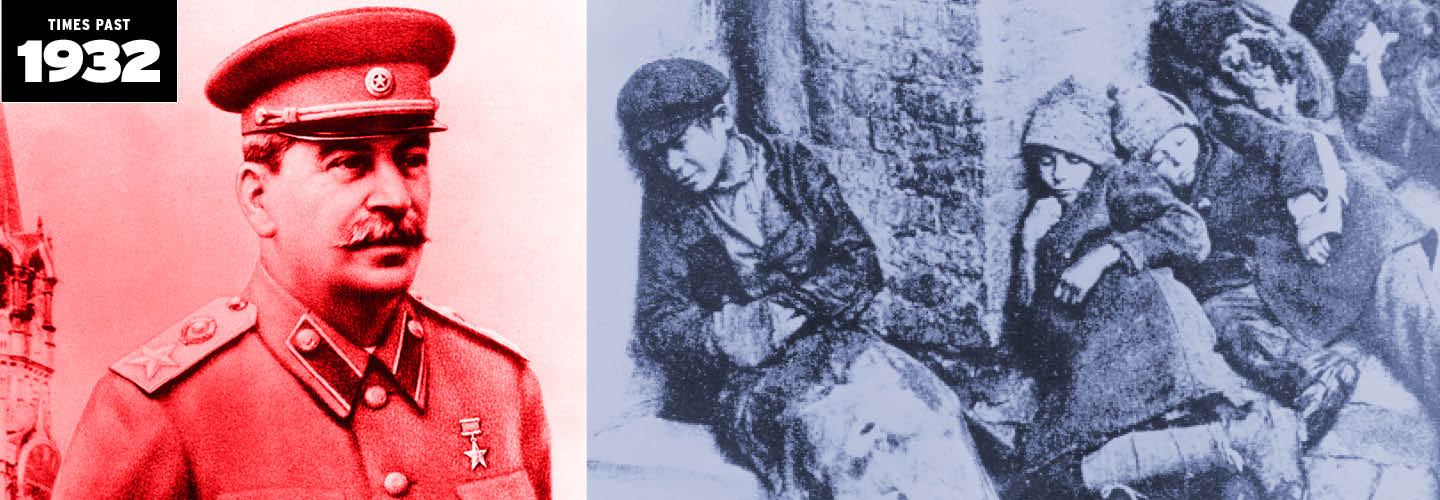The soil in Ukraine is some of the most fertile anywhere—so fertile that the country is sometimes known as “the breadbasket of Europe” for its vast fields of grain. But in 1932 and 1933, millions of people in this region known for producing so much of the world’s food were dying in the streets of starvation.
This catastrophic famine—known in Ukraine as the Holodomor, or “death by hunger”—wasn’t caused by blight or drought, but by government policy under the rule of the Soviet Union’s dictator at the time, Joseph Stalin.
Aiming to crush Ukrainian independence and transform the Soviet Union into an industrial power, Stalin forced millions of Ukrainian peasant farmers onto state-run collective farms, punishing resistance to his harsh measures by leaving the population without enough food to survive.
The soil in Ukraine is some of the most fertile anywhere. In fact, the country is sometimes known as “the breadbasket of Europe” for its vast fields of grain. But in 1932 and 1933, millions of people in this region known for producing so much of the world’s food were dying in the streets of starvation.
This deadly famine is known in Ukraine as the Holodomor, or “death by hunger.” It wasn’t caused by a plague or drought. Instead, it happened because of a government policy under the rule of the Soviet Union’s dictator at the time, Joseph Stalin.
Stalin forced millions of Ukrainian peasant farmers onto state-run collective farms. He did so as part of his plan to crush Ukrainian independence and make the Soviet Union an industrial power. Stalin punished resistance to his harsh measures by leaving the population without enough food to survive.

